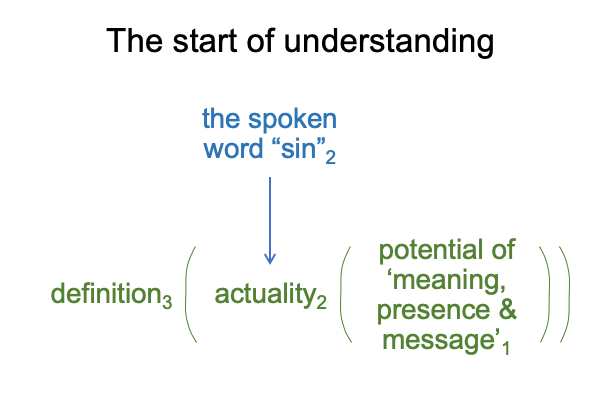0115 My comments on chapters one and seven, 1A and 7A’, set the stage for original sin2V.
Chapter one claims that neither science nor theology can situate one another. When two actualities cannot situate one another, then they may intersect. The intersection associates to the potential of message, in the e-masterwork, How To Define the Word “Religion”.
Chapter seven discusses the formulation of the doctrine of original sin by Augustine. According to Augustine, Adam and Eve are the parents of all humanity. When taken as a scientific hypothesis in human evolution, the proposition fails.
Does that mean that narrative of human evolution2H and the doctrine of original sin2V do not intersect?
No, the intersection still stands.
0116 To me, the fact Augustine’s formulation contains a scientific proposition is amazing. How many theological formulations can be debunked by science? Remember, science cannot situate revelation. Revelation cannot situate science.
When Paul links Adam to all humanity in his letters to the Corinthians and to the Romans, Haarsma’s third intersection enters reality. How can this be? Augustine’s solution says that Adam and Eve are the parents of all humanity. For centuries, the nested form for human evolution is covered by Augustine’s proposition. Now, in postmodernity, the hypothesis of the first singularity is the solution.
A scientific twist in human evolution2H joins the doctrine of original sin2V in a single actuality, our current Lebenswelt2.
0117 Chapter eight follows the semitic structure of 1A:2B:3C:4D:5C’:6B’:7A’.
Chapter eight pays tribute to the slipperiness of speech-alone words by asking the question, “What is ‘sin’?”
0118 Of course, “sin” is merely a spoken word.
One needs a normal context3 and a potential1 in order to understand this actuality2.
0119 Here is a diagram.

